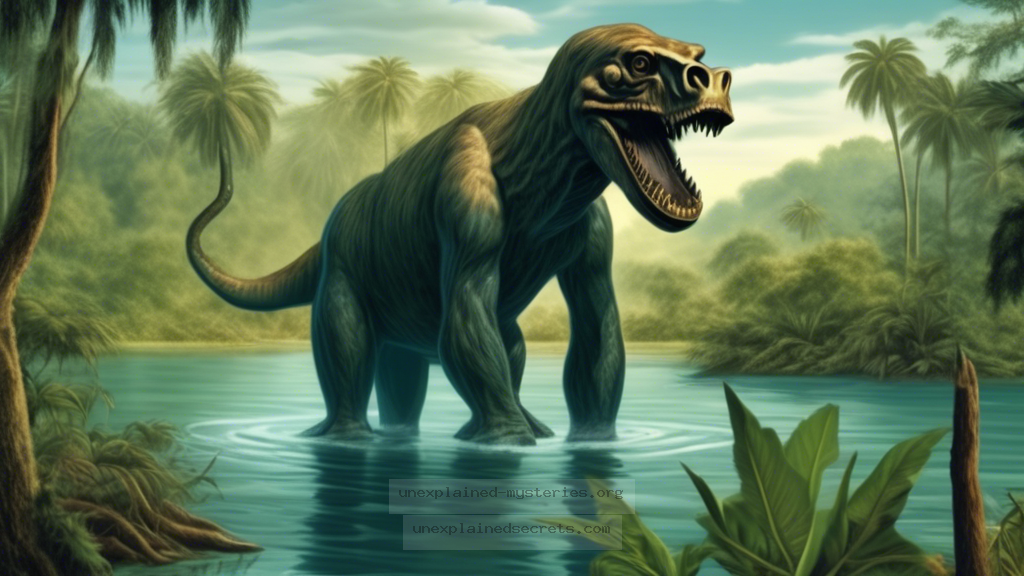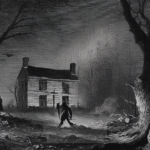What Really Happened During the Mysterious Mokele-Mbembe Sightings in the Congo?
What Really Happened During the Mysterious Mokele-Mbembe Sightings in the Congo?
For centuries, the Congo River Basin has been the backdrop for one of the most captivating cryptozoological mysteries—the legendary Mokele-Mbembe. This creature, often described as a living dinosaur resembling a sauropod, has sparked intrigue among scientists, explorers, and cryptozoologists alike. But what exactly is the Mokele-Mbembe? And why does its existence elude conclusive evidence? This exploration delves into historical accounts, contemporary sightings, and the cultural significance of this enigmatic creature, providing a comprehensive understanding of one of cryptozoology’s most compelling cases.
Historical Context of the Mokele-Mbembe
The legend of Mokele-Mbembe dates back to the early 20th century, originating from the stories of the local tribes in the Congo. The name itself translates to “one who stops the flow of rivers,” aptly representing a creature that is believed to inhabit the waters of the Congo River. The earliest reports of Mokele-Mbembe appeared in Western literature when explorer Paul Grégoire wrote about it in the 1770s, describing it as a large animal that resembled a brontosaurus. The fascination grew as more expeditions were launched into the heart of Africa, with varying reports of sightings and encounters with this elusive beast.
Core Concepts and Theories
The Mokele-Mbembe is often classified within the framework of cryptids—creatures whose existence is suggested but not proven by science. It falls into a category of “living fossils,” which are species thought to have been extinct for millions of years but are believed to still exist in isolated environments. This concept raises intriguing questions about evolution, biodiversity, and the potential for undiscovered species in our world. Some scientists speculate that the creature could be a type of large herbivorous dinosaur or perhaps an elephant-like animal, while others consider the possibility of it being an entirely new species.
Documented Sightings and Investigations
Numerous expeditions have attempted to uncover the truth behind Mokele-Mbembe, with varying degrees of success. One notable expedition was led by Dr. Roy Mackal in the 1980s, who conducted field studies in the Congo Basin. Mackal interviewed local villagers, collected anecdotal evidence, and even attempted to track the creature using sonar equipment. His findings, while inconclusive, highlighted the wealth of local folklore and the depth of belief in the creature’s existence among indigenous populations.
Practical Implications and Evidence
Despite the lack of physical evidence, the significance of Mokele-Mbembe extends beyond mere curiosity. The creature’s existence could challenge our understanding of biodiversity and the limits of exploration. The Congo Basin remains one of the least explored regions on Earth, with vast areas still shrouded in mystery. The potential discovery of a new species could have implications for conservation efforts and our understanding of ecological balance in these unique habitats. Furthermore, the Mokele-Mbembe legend serves as a cultural touchstone for the communities that inhabit the region, symbolizing their deep connection to nature and the unknown.
Alternative Perspectives on the Existence of Mokele-Mbembe
While many enthusiasts advocate for the existence of Mokele-Mbembe, skeptics argue that the stories may be rooted in myth rather than reality. Some anthropologists suggest that the creature embodies the fears and hopes of the local communities, representing the mysteries of the jungle and the untamed wilderness. This perspective emphasizes the importance of cultural narratives in shaping human understanding of the natural world, suggesting that the legend of Mokele-Mbembe may serve more as a psychological symbol than a biological reality.
Common Misconceptions and Clarifications
One common misconception about Mokele-Mbembe is that it is a direct descendant of dinosaurs, which implies a lineage that defies evolutionary timelines. In reality, the concept of a living dinosaur often conflates the characteristics of different species. The descriptions of Mokele-Mbembe vary widely, with some accounts resembling crocodiles or hippos rather than traditional dinosaurs. As a result, it is essential to approach the legend with an open mind while recognizing the potential for misinterpretation and exaggeration in eyewitness accounts.
Best Practices for Investigation and Study
For those interested in pursuing the study of cryptids like Mokele-Mbembe, adopting a systematic approach is crucial. Here are some best practices:
- Conduct thorough research: Familiarize yourself with both historical and contemporary accounts of sightings.
- Engage with local communities: Building relationships with indigenous populations can provide valuable insights and firsthand knowledge.
- Utilize technology: Employ modern tools such as drones and sonar equipment to explore previously inaccessible areas.
- Document findings rigorously: Maintain detailed records of observations, interviews, and evidence collected during expeditions.
Future Developments and Ongoing Research
As interest in cryptozoology continues to grow, the mystery of Mokele-Mbembe remains an active area of research. Recent advancements in genetic testing and environmental monitoring may open new avenues for exploration. Researchers are now able to analyze environmental DNA (eDNA), which allows them to detect the presence of species in a given area without needing to capture or observe them directly. Such techniques could potentially yield insights into the biodiversity of the Congo Basin and provide clues about the existence of Mokele-Mbembe.
Conclusion: The Enduring Legacy of Mokele-Mbembe
The Mokele-Mbembe continues to captivate the imagination of those who hear its tale, a symbol of the mysteries that lie within the unexplored corners of our planet. While concrete evidence remains elusive, the combination of historical accounts, cultural significance, and scientific inquiry keeps the legend alive. Whether Mokele-Mbembe exists or not, its story serves as a reminder of the wonders of nature and the endless possibilities that await discovery. As we venture into the future of exploration and research, the pursuit of the unknown will undoubtedly lead us to new insights about our world and our place within it.
Key Takeaways:
- The Mokele-Mbembe is a legendary creature from the Congo, often described as resembling a dinosaur.
- Historically documented sightings and local folklore contribute to the ongoing mystery surrounding its existence.
- Scientific advancements may provide new avenues for exploring the biodiversity of the Congo Basin.
- Understanding cultural perspectives is crucial in studying cryptids and their significance.
Other Articles
Recent Posts
- What Happened to Flight MH370? The Conspiracy Theories That Still Haunt Us
- What Secrets Lurk Within the Walls of the Infamous Trans-Allegheny Lunatic Asylum?
- What Evidence Supports the Existence of Bigfoot in the Pacific Northwest?
- What Happened to the Indus Valley Civilization? Unraveling the Mysteries of Ancient Urban Life
- Can Telepathy Be Scientifically Proven Through Laboratory Evidence?







